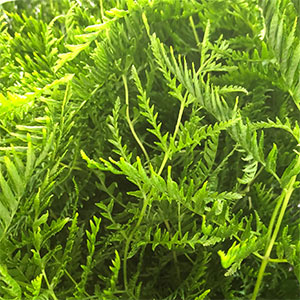
A fern with fine mid to emerald green foliage Pteris dentata is commonly called the ‘Toothed Brake Fern.
This is terrestrial fern that grows in shaded forest areas in areas of South Africa. Excellent as a ground cover plant for shaded moist locations. They foliage tends to stay a little cupped or closed and this adds to the fine feathery appearance.
Care
Growing both as a terrestrial fern Pteris dentata will thrive in dappled shade in a moist soil.
In will grow well in containers and is a good choice for a shaded courtyard. Also suited to growing in vertical walls and larger hanging baskets.
Summary Information
- Botanical Name – Pteris dentata
- Common Name – Toothed Brake Fern.
- Family – Pteridaceae
- Origins – South Africa
- Height – Fronds will reach around 1 metre in height.
- Spread – Clump forming over time
- Growth rate – Medium to Fast
- Position – Light shade.
- Soil – Moist
- Flowers – N/A. Plants are propagated from spores or by division
- Flowering Time – N/A
- Foliage – Mid to deep green.
- Frost tolerant – Half Hardy – not suited to heavy frosts..
- Drought tolerant – No
Pteris dentata is available for sale from the following nurseries
FERN ACRES NURSERY
1052 Whittlesea-Kinglake Road Kinglake West 3757
Offering a specialist variety of Australian native Ferns plus Dendrobium/Dockrillia & Sarcochilus species & hybrids in pots, loose, or mounted. Species Cymbidium sauve and maddidum.
www.ferns.com.au
1052 Whittlesea-Kinglake Road Kinglake West 3757
Offering a specialist variety of Australian native Ferns plus Dendrobium/Dockrillia & Sarcochilus species & hybrids in pots, loose, or mounted. Species Cymbidium sauve and maddidum.
www.ferns.com.au

